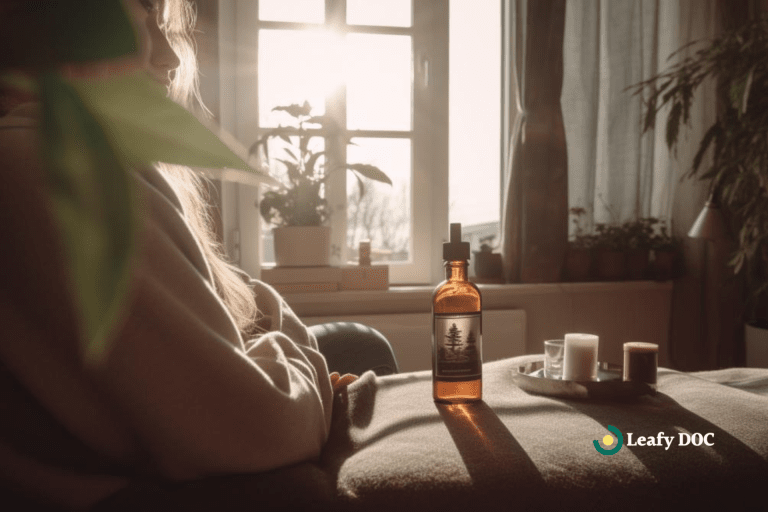PTSD
What is PTSD?
Post-traumatic stress disorder (PTSD) is a disorder that develops in some people who have experienced a severely shocking or dangerous event. It is typically a devastating condition that can lead to other mental illnesses if left untreated.
Is PTSD associated with anxiety?
Yes. According to the Anxiety & Depression Association of America (ADAA), most people with PTSD can recover with treatment and possibly anti-anxiety medications. However, people with post-traumatic stress disorder can continue to feel severely depressed and anxious for a significant period following the event.
Women are twice as likely to have post-traumatic stress disorder as men. It is also common among children who have gone through a traumatic experience.
PTSD often enhances depression, substance abuse, or anxiety disorder. Treatments other than anti-anxiety drugs include group therapy, cognitive processing therapy, acupuncture, hypnosis, and more. Medical cannabis can also be a convenient and effective method to eliminate trauma memories if you live in a legal state.
Types of Anxiety
Five main types of anxiety include:
- Generalized Anxiety Disorder is characterized by chronic stress, tension, and worry when there is little or nothing to provoke it.
- Obsessive-Compulsive Disorder is characterized by recurrent and unwanted thoughts or obsessions and repetitive behaviors or compulsions.
- Panic Disorder is caused by unexpected or repeated episodes of intense fear and other physical symptoms, such as chest tightness, racing heart rate, or gastrointestinal issues.
- Post-Traumatic Stress Disorder occurs after someone is exposed to a traumatic event in which physical or emotional harm occurred or was threatened. This includes sexual assault, military combat, and vehicle accidents.
- Social anxiety disorder, or social phobia, causes an intense fear that one is being evaluated or judged by others when in social settings. This persistent fear can affect daily life, including work, school, friends, family, errands, doctor visits, and more. Although it can feel beyond one’s control, social anxiety and other anxiety disorders are treatable. It is the most common type of anxiety disorder. If treatment isn’t pursued, it could lead to disruptions in everyday life and, in severe cases, result in alcohol and cannabis dependence as a coping mechanism.
Group Support Therapy
Group therapy allows a person with PTSD to learn social skills from others that may be going through similar situations in a safe space. Participating in group activities with other people that have anxiety, obsessive-compulsive disorder, or another mental disorder can make one feel less alone and more understood as an individual.
Cognitive Behavior Therapy
Cognitive-behavioral therapy, or talk therapy, is the most common type for those with anxiety disorders. During talk therapy, the patient with PTSD disorder will meet regularly with a therapist to self-report measures of behaviors, emotions, and thoughts during everyday life.
This will encourage and assist the individual in recognizing and addressing intrusive, harmful, or false ideas to help treat PTSD patients. In time, cognitive behavior therapy can change thought patterns and help the patient see things more positively.
Alternative Therapy
This category includes yoga, meditation, exercise, and acupuncture. These holistic therapies are popular for people looking to increase blood flow, change their lifestyles and build healthier habits. For some, they can assist in treating PTSD.
Some alternative solutions combined with medication, therapy, or medical marijuana could successfully result in a significant decrease in anxiety and build a healthy, happy, and productive lifestyle.
What are the symptoms?
Many people may have PTSD at any life stage. Its symptoms can include the following:
- Repeating intrusive memories, dreams, and thoughts correlated with a frightening event.
- Evading people, situations, or places brings back a traumatic event’s memory.
- Unwanted feelings of agitation, anxiety, or insomnia.
- Mood disruptions may include depression, impaired cognitive abilities, low self-esteem, or a desire to be social.
- Considering these symptoms, PTSD patients find it hard to function well in society while maintaining relationships. These patients are also exposed to higher suicide risk among elderly populations. Some marijuana strains, like a blue dream and pineapple express, could be the best strains for PTSD and to relieve self-harming thoughts.
Who typically suffers from PTSD?
People with PTSD deal with present emotional reactions to past trauma memories or even a recent traumatic event. The prominent people who are known to develop PTSD are:
- War Veterans
- Sexual Assault Victims
- Prolonged Exposure to Childhood Abuse
- Sufferers of a Traumatic event
- Near-Death event Survivors
How can medical cannabis help?
The best strains for PTSD and anxiety would have a more considerable amount of CBD and lower levels of THC. High-THC cannabis strains can induce anxious feelings and panic attacks.
The critical cure is a tremendous strain because CBD and THC are in a nice balance. Safe access to certain marijuana strains with a combination of these concentrations could allow for the health benefits of marijuana use without the risks.
THC and CBD cannabinoids can improve sleep quality, chronic pain symptoms, and duration of anxiety disorders or panic attacks for PTSD patients. These clinical trials tell us that CBD-dominant strains may help reduce PTSD in the short term and help you sleep better overall.
Is Indica or Sativa better for PTSD?
Indica and Sativa cannabis plants differ in physical traits and their psychoactive effects on a person. Indica originated around the mountainous countries of Central Asia in a cool climate. Sativa originated near the equator in warm and humid weather. Indica and Sativa vary in flowering period, leaf shape, and plant size, considering the difference in origin.
INDICA
Indica grows wide and short, making them ideal for indoor growers. Indica strains have anti-inflammatory, muscle relaxation, and soothing qualities. Containing high CBD and low THC content, PTSD patients are guaranteed to feel a powerful body high. If you have difficulty sleeping or are suffering from chronic pain, Indica will suit you.
SATIVA
Sativa strains create euphoric, uplifting, happy, and energizing sensations. With standard medical marijuana dosages, these strains are an efficient treatment for people who have gone through stress-related traumatic events and have developed anxiety and depression or to treat PTSD. Sativa is ideally taken during the daytime to attain focus and relieve anxiety symptoms.
Summary
Similar to anxiety disorder, PTSD is not a condition to leave untreated. It can be a remarkably debilitating condition that negatively impacts many aspects of life along with your mental health. It’s not uncommon for people with PTSD to develop severe anxiety or depression; in extreme cases, some PTSD patients have developed other severe mood disorders.
For those with post-traumatic stress disorder who are considering obtaining a medical marijuana card for the condition, we recommend discussing any changes in how you treat PTSD or use medical marijuana with your medical provider first.
Last Updated: June 14, 2024
Get Your Medical Card
Connect with a licensed physician online in minutes
Table of Contents
Keep Reading
-
Using Cannabis Tinctures For Relaxation And Stress Relief
Unwind naturally with cannabis tinctures for relaxation and stress relief. Learn how to use this powerful remedy in our ultimate guide and say goodbye to stress today!
-
Using Medical Cannabis For Effective Pain Management
Find out how medical cannabis can effectively manage pain and improve your quality of life. Learn about its benefits and determine if it’s the right solution for you. Click now to discover the power of medical cannabis for pain management!
-
Microdosing Cannabis For Sleep: A Comprehensive Guide To Sleep Disorders And Marijuana
Sleep better with microdosing cannabis! Our comprehensive guide explores sleep disorders, marijuana strains, and dosing techniques. Click now to revolutionize your sleep!



